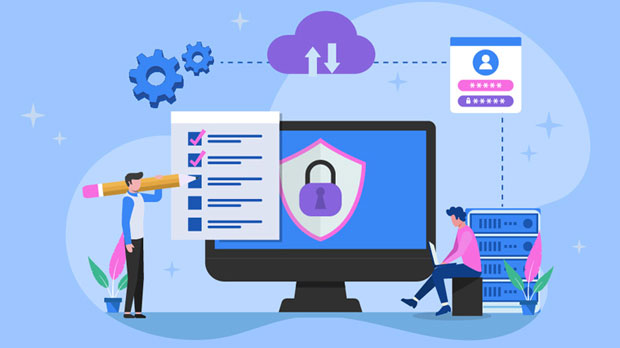In today's internet age, unrestricted access to information has become a fundamental necessity for users. However, many online services and content are blocked or restricted based on geographical location, censorship, or network policies. SOCKS5, a versatile internet protocol, has proven to be a reliable tool for bypassing such restrictions. It works effectively in unblocking web proxies, providing users with enhanced security, speed, and anonymity. The SOCKS5 protocol has emerged as a preferred choice for users who seek a more secure and seamless browsing experience in a scenario where websites are blocked or filtered. What is SOCKS5 Protocol?Before we dive into its benefits in unblocking web proxies, it's important to understand what the SOCKS5 protocol is. SOCKS stands for "Socket Secure," and version 5 is the latest iteration of this protocol. It functions as an internet protocol that routes traffic between a client and server through a proxy server. SOCKS5 operates at a low level, allowing for the transfer of any type of data between the client and the server, unlike other protocols that typically handle only certain types of data, like HTTP. SOCKS5 can handle any internet traffic, including web browsing, email, and peer-to-peer connections, making it highly versatile.SOCKS5 in Unblocking Web ProxiesOne of the primary uses of SOCKS5 is its ability to bypass restrictions imposed by firewalls, geo-blocking, and government censorship. Many users rely on web proxies to access blocked content, but these proxies often have limitations, such as slow speeds or vulnerability to detection. SOCKS5 excels in this area by offering enhanced anonymity and security, which makes it a powerful tool for unblocking web proxies.1. Enhanced Anonymity and PrivacyThe SOCKS5 protocol is renowned for its ability to offer improved privacy and anonymity. By masking the user's real IP address and routing their traffic through a proxy server, SOCKS5 ensures that the user's identity remains hidden. This feature is particularly beneficial when accessing websites that might be blocked due to geographical restrictions, government censorship, or network policies. Unlike traditional HTTP proxies, which reveal the user's IP address to the destination server, SOCKS5 ensures that all traffic is anonymized, protecting users from potential surveillance and online tracking.2. Bypassing Geo-RestrictionsGeo-restrictions are a common method used by content providers to limit access to their services based on the user's location. For example, certain websites or streaming services may only be accessible to users from specific countries. SOCKS5 allows users to bypass these geo-restrictions by masking their real IP address and assigning them an IP address from a different region. This enables users to access content that would otherwise be unavailable in their location. Whether it is streaming videos, accessing foreign websites, or using online services that are blocked in certain countries, SOCKS5 provides a seamless solution.3. Avoiding CensorshipIn regions where internet censorship is prevalent, such as in some authoritarian countries, access to certain websites and social media platforms may be restricted or entirely blocked. SOCKS5 helps users in such regions access restricted content by providing a secure, encrypted tunnel for their internet traffic. Unlike traditional proxies, SOCKS5 is harder to detect and block, making it an effective tool for users who need to bypass strict censorship measures. By using SOCKS5, users can maintain their online freedom and access information without fear of government intervention.4. Improved Speed and PerformanceOne of the significant advantages of using SOCKS5 in unblock web proxy scenarios is its superior speed and performance. Many traditional proxies suffer from slow speeds due to network congestion and the additional layers of filtering that occur during data routing. However, SOCKS5 does not suffer from these limitations. It routes traffic directly between the client and the proxy server, minimizing latency and ensuring faster connection speeds. This is particularly important when streaming videos or engaging in activities that require high-speed internet, such as online gaming.5. Compatibility with Various Internet ApplicationsSOCKS5 is highly versatile in terms of compatibility with different types of internet applications. Unlike other protocols like HTTP and HTTPS, which are primarily designed for web browsing, SOCKS5 can support any type of internet traffic, including file sharing, email, and peer-to-peer (P2P) communications. This makes SOCKS5 a more flexible solution for unblocking web proxies, as it works with a wide range of applications that may be restricted in certain regions. Whether users are downloading files, accessing their email accounts, or engaging in online gaming, SOCKS5 ensures that they can do so without encountering network restrictions.6. Security and EncryptionSecurity is another key advantage of SOCKS5 in unblocking web proxy scenarios. While SOCKS5 itself does not provide encryption, it can be used in conjunction with additional security protocols, such as SSL/TLS or VPN services, to enhance data protection. This is particularly important for users who want to ensure that their internet traffic is secure and private. By encrypting their traffic, users can prevent hackers, cybercriminals, and even government agencies from intercepting or monitoring their online activities. This makes SOCKS5 a valuable tool for anyone who prioritizes internet security while accessing restricted content.7. Scalability for Business UseFor businesses that require employees to access geo-blocked content or circumvent censorship, SOCKS5 can offer a scalable solution. Unlike many other proxy protocols, SOCKS5 allows for the management of multiple connections simultaneously, making it ideal for corporate environments. This scalability means that businesses can easily provide secure, anonymous browsing for employees, regardless of their location. Whether for market research, accessing global websites, or maintaining privacy in sensitive communications, SOCKS5 is an essential tool for companies that need to manage large volumes of web traffic securely.ConclusionIn summary, SOCKS5 is an excellent choice for users looking to unblock web proxies. Its ability to provide enhanced privacy, bypass geo-restrictions, avoid censorship, improve performance, and support a wide range of internet applications makes it a highly versatile and effective protocol for secure browsing. Whether for personal use or business needs, SOCKS5 offers a powerful solution for accessing restricted content while maintaining a high level of security and anonymity. By leveraging the strengths of SOCKS5, users can enjoy a more seamless and unrestricted internet experience, making it an invaluable tool in today's digital landscape.
Aug 04, 2025



































































